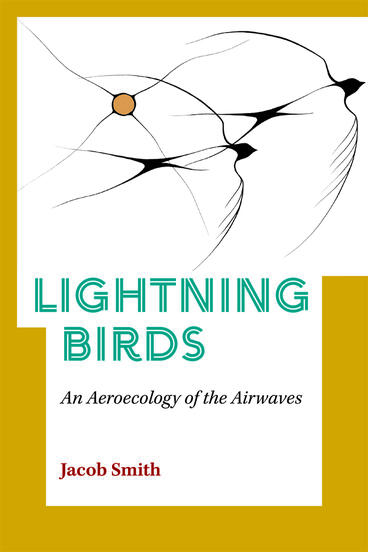Lightning Birds
An Aeroecology of the Airwaves
A work of interdisciplinary scholarship at the crossroads of radio history, ornithology, sound studies, and ecocriticism
Description
The aerosphere is a literal and figurative contact zone for birds and media. Transmission towers become obstacles in birds’ flight paths; radar systems emit signals that reveal the large-scale movements of birds; parabolic microphones directed at the sky detect avian flight calls; and miniature radio transmitters are attached to birds to track their global travels.
Lightning Birds is a multi-media project that consists of a five-episode, podcast-style audiobook, a curatorial essay, and a bibliography. It tells a new story about radio, describes important scientific discoveries about bird migration through interviews with key researchers, and explores a mode of ecocriticism that combines traditional forms of text-based scholarship with sound art, music, and audio storytelling. At a moment when 13% of all bird species are threatened with extinction, Smith writes not only to those working in media studies, environmental studies, and ornithology, but also to a broader public. He argues that by knowing more about how birds use the sky, we might begin to minimize the damage that our buildings, media, and environmental degradation do to the aerosphere.
Jacob Smith is Professor, Department of Radio-Television-Film, and Director, MA in Sound Arts and Industries at Northwestern University.
Reviews
“The work has an innovative thematic focus, drawing media studies into meaningful dialogue with ecocriticism and cross-disciplinary dialogue with ornithology; it also contributes to the development of the genre of the scholarly podcast as an engaging sonic experience. I know of nothing quite like it.”
- Marit MacArthur
—Marit MacArthur, University of California Davis
“Lightning Birds is a highly original account of the history of bird study and its intertwined relationship with technology and media. Although many birdwatchers and conservationists are familiar with current debates about the impacts of technologies such as wind energy and artificial light on migratory birds, few are aware of the much longer history of studying the impacts of communications towers on bird migration. The historical accounts and interviews provide a valuable and often forgotten perspective that will help us understand the conservation challenges of today.”
- Ben Winger
—Ben Winger, University of Michigan Museum of Zoology
"In a field often marked by dense theoretical work, Lightning Birds is refreshing in its methodological and argumentative accessibility, while sacrificing none of the scope and urgency of the best work in environmental media studies."
- ISLE: Interdisciplinary Studies in Literature and Environment
—ISLE: Interdisciplinary Studies in Literature and Environment
Winner: Society for Cinema and Media Studies (SCMS) 2022 Anne Friedberg Innovative Scholarship Award
- SCMS Anne Friedberg Innovative Scholarship Award
"This well thought out audiobook is right on top of its game, providing details with numerous ways to interact and entertain the consumer."
- Muskogee Daily Phoenix and Times-Democrat, Deb Hirt

